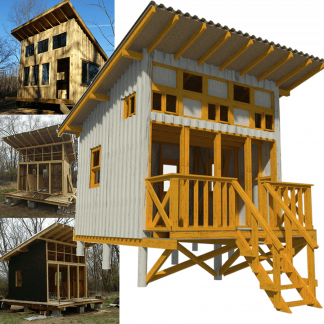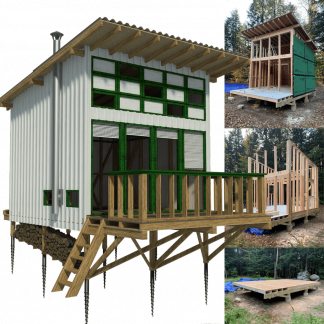Ceiling fans are one of the simplest upgrades you can make to improve air circulation, reduce energy bills, and add comfort to your home.
But when it’s time to replace an old one or install a new fan, many homeowners wonder: Do you need an electrician to install a ceiling fan, or can you safely do it yourself?
The answer depends on your wiring, your tools, and your confidence level. This guide explains what’s involved, when a DIY installation is safe, and when it’s smarter to call a professional.
Why Installing a Ceiling Fan Isn’t Always Straightforward
On the surface, installing a fan looks like a simple swap: take the old one down, hook up a few wires, and hang the new fan. But in reality, ceiling fan installation requires a mix of electrical knowledge and mechanical skill.
The challenge isn’t just connecting wires. You have to hold a heavy fan motor while lining up the mounting bracket and bolts overhead, often while balancing on a ladder. Things can get tricky if:
- The ceiling box isn’t rated to hold a fan’s weight or movement.
- The existing wiring is old, loose, or not grounded properly.
- You’re installing a fan where there wasn’t one before, which requires new wiring or a switch.
- The fan height or location (like a sloped or high ceiling) makes mounting difficult.
In some cases, previous owners installed a fan incorrectly, using a light fixture box instead of a fan-rated one, which could cause the fan to loosen or even fall over time.
When You Can Install a Ceiling Fan Yourself
If you’re replacing an existing fan or light fixture that already has the right setup, you can usually handle it on your own. Here’s when a DIY installation makes sense:
- Same location replacement, you’re just swapping an old fan for a new one using the same ceiling box and wiring.
- Fan-rated electrical box. The box is clearly labeled “Suitable for Ceiling Fan Support.”
- Standard ceiling height. You can reach and handle the fan comfortably with a stable ladder.
- You understand basic wiring. You can safely match and connect black (hot), white (neutral), and green or bare (ground) wires.
- You have the tools. A screwdriver, wire strippers, pliers, and a voltage tester are enough for most replacements.
Many modern ceiling fans are designed for single-person installation.
Some even include temporary hooks or brackets that let you hang the motor housing while you connect the wires, making the process easier and safer.
When to Hire an Electrician
There are situations where calling a licensed electrician is not just smart, it’s the safest choice. You should consider hiring one if:
- You’re adding a new fan where none existed (requires running new wiring and possibly a switch).
- The electrical box is loose, damaged, or not fan-rated.
- You want to add a new control switch, dimmer, or remote system.
- Your ceiling is very high or angled, requiring special mounting equipment.
- You’re simply not confident working around electricity.
Electricians also know local building codes and safety standards, which vary by city. For example, if you’re looking for a licensed electrician in Nashville, TN, a local expert will make sure your fan meets code, is properly grounded, and securely supported.
Safety First: What Every Homeowner Should Know
Before attempting any ceiling fan installation, take these safety steps seriously:
- Turn off the power at the breaker, not just the wall switch. Test wires with a voltage tester before touching anything.
- Confirm your ceiling box is fan-rated. Light fixture boxes aren’t designed to hold a fan’s weight or motion.
- Have a helper if possible. Even with easy-mount designs, an extra set of hands can make the job faster and safer.
- Follow the manufacturer’s instructions carefully for wiring, mounting, and balancing the blades.
- Don’t overload circuits. If you’re unsure which breaker your fan is connected to, consult an electrician.
Cost Considerations
- DIY costs: A replacement fan typically costs $100–$250, depending on features. If your setup is already correct, you won’t spend much beyond the fan and a few basic tools.
- Professional installation: Hiring an electrician usually costs $100–$300 per fan, depending on location, ceiling height, and wiring complexity. Some charge a minimum hourly rate (often $100–$150) or a small estimate fee for quick jobs.
It’s common for electricians to have a minimum service charge, not because they overprice small jobs, but because travel, setup, and safety procedures take time.
Smaller, independent electricians often charge less than large companies with overhead and schedulers.
Real-World Experience: What Homeowners Say
In a discussion among homeowners, opinions varied on whether to DIY or hire out. Here’s what people learned:
- Some found it easy to replace a fan themselves, especially if the wiring was simple and the box was solid.
- Others pointed out that if you have to ask whether you can do it, you might be better off hiring someone experienced with electrical work.
- A few noted that some cities require licensed electricians for even minor electrical tasks, depending on local code enforcement.
- Many agreed that a handyman can often handle a straightforward swap, but if wiring is old or nonstandard, it’s best left to an electrician.
In one homeowner’s case, hiring a professional turned out to be the right call. Once the electrician arrived, they discovered poor wiring in the bedroom ceiling that could have caused problems later. After correcting the wiring, the fan installation went smoothly and safely.
DIY vs. Electrician: Quick Comparison
Deciding whether to install a ceiling fan yourself or hire an electrician mostly depends on how comfortable you are with electrical work and the condition of your current setup.
If you’re simply replacing an old fan using the same wiring and a fan-rated box, doing it yourself is generally safe and straightforward.
You’ll just need basic tools and a bit of patience. However, when the job involves adding new wiring, installing a fan where there wasn’t one before, or connecting new switches or remotes, it’s best to call an electrician.
The same goes for older homes where the wiring may be outdated, or ceilings that are high, angled, or hard to reach.
If your electrical box isn’t designed to support the weight of a fan or you’re unsure about your home’s wiring, a licensed professional can make sure everything is secure, properly grounded, and up to code.
In short, a confident DIYer can handle a simple swap, but anything more complex should be left to an expert.
Final Thoughts
Installing or replacing a ceiling fan can be a simple DIY project or a complex electrical task, depending on your situation.
If your home already has a fan-rated box and standard wiring, you can install a ceiling fan yourself with care and patience.
However, if there’s any uncertainty about your wiring, box rating, or local code, hiring a licensed electrician is the safest option. It ensures your fan is securely mounted, properly wired, and ready to keep you cool for years to come.
Whether you choose the DIY route or call a pro, the goal is the same: a quiet, balanced, and reliable ceiling fan that adds comfort and style to your home.








